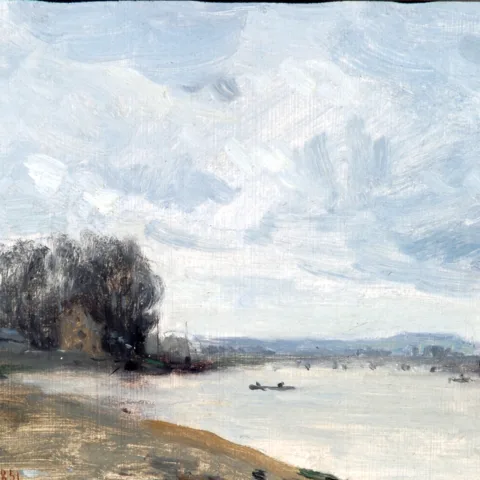The Bowes Museum Blog

The Year of the Rabbit
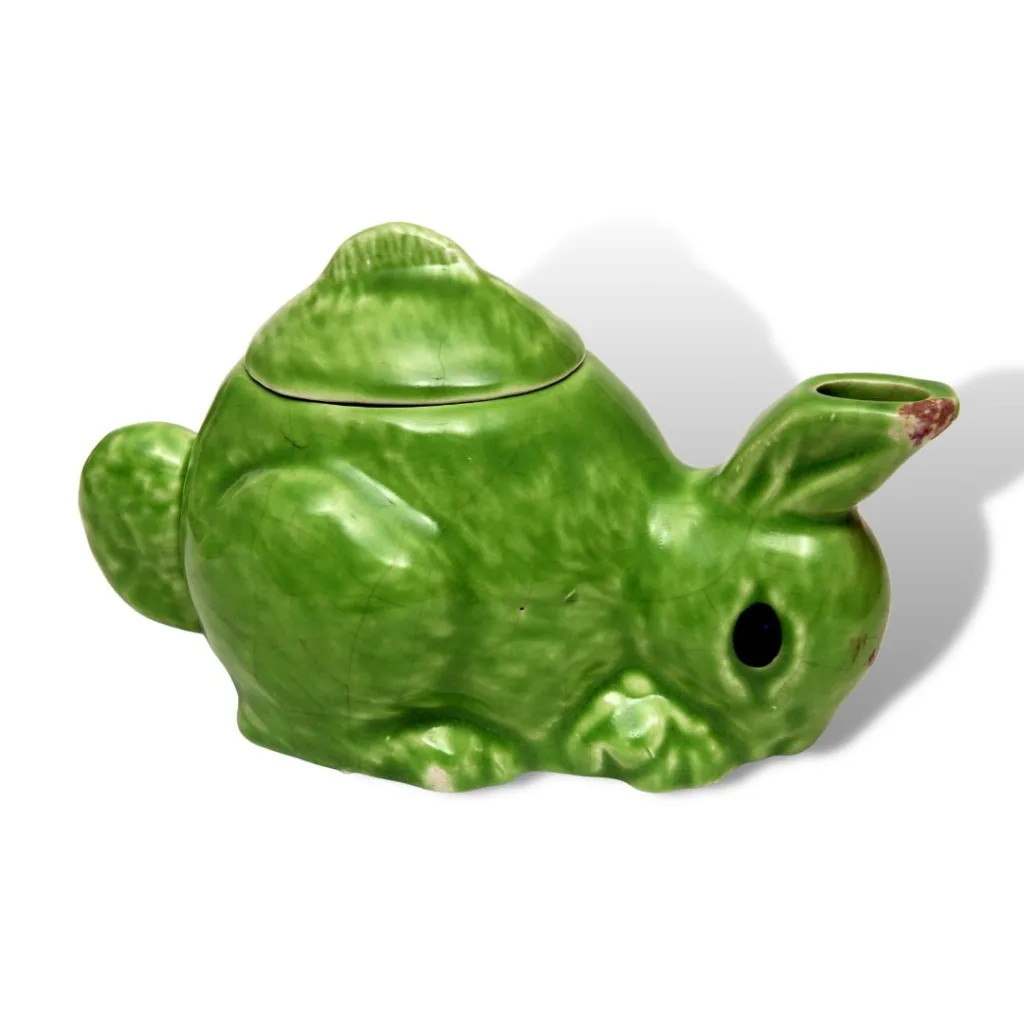
The New Chinese Year starts today represented by the year of the Rabbit. The Rabbit is considered the luckiest of the 12 animals that comprise the Chinese Zodiac.
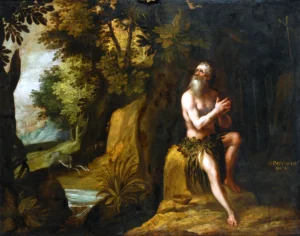
St. Paul the Hermit in the Desert, Maarten de Vos (1532–1603) (after) and Sadeler family (active 16th C–17th C), B.M.815
Many moons ago in ancient China. The Jade Emperor decided to hold a Great Race between the 12 most iconic animals within his kingdom. The animals were told that the order they completed the race would determine the name of each year of the zodiac. The race tested the skills of each animal and showcased their virtues. The hardest section of the race came at the end and required all the animals to cross a wide river.
The sneaky Rat came in first place after persuading the kind Ox to help its passage. Thus the Rat won the race and the Ox came in second place. Although the Tiger was powerful and so was a clear leader throughout the race, a current in the water pushed the tiger off course resulting it finishing in third place.
In fourth place was the rabbit, whose speed and agility saw it quickly finish the first sections of the race. On approaching the river the rabbit realised it would need to use its creative thinking to find safe passage as rabbits are not known for their swimming skills. The rabbit saw a floating branch which it used to float across the lake (with the help of a puff of dragon’s breath but this is a story for another day). Thus the fourth year of the zodiac is the Rabbit. People born in the Year of the Rabbit are thought to be creative, quick-minded, supportive, vigilant, witty and ingenious.
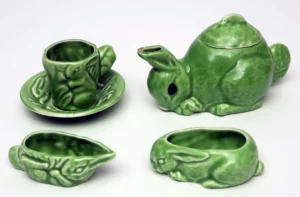
This beautiful tea set was purchased byHMQueen Elizabeth, The Queen Mother for young princesses, Elizabeth and Margaret, circa. 1930. Child’s tea set: teapot, jug, sugar bowl, cup and saucer Made by: C. W. Wilson & Sons Co., Sunderland Toy.3.29
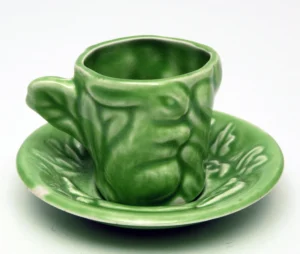
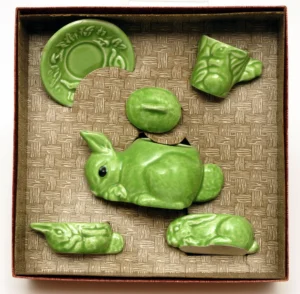
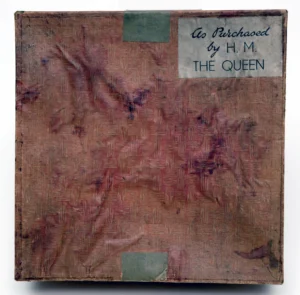
It is probable that the first rabbits in England were introduced by the Romans, as evidenced by archaeologists who found skeletal remains of a rabbit at Fishbourne Roman Villa in Sussex. It is likely that the Romans developed their love for rabbits during their conquest of lands within Spain and this is perhaps reflected by the common occurrence of rabbits as a decoration on Roman pottery. This trend of rabbits as decorations on ceramics continued until the modern day, as demonstrated by several rabbit inspired pieces in The Bowes Museum’s collection.
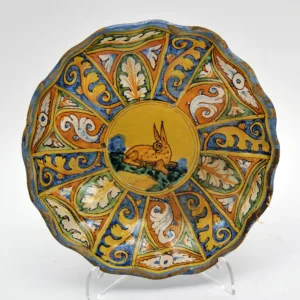
Montelupo Maiolica Dish, early 17th century, X.2126
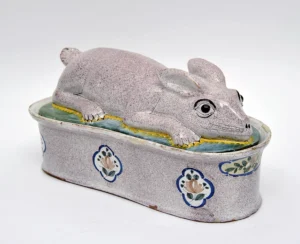
Tureen and Cover, Nevers Faience, Purchased in 1868 from Madame Lepautre for 17 francs, c.1750-1800, X.4097
Rabbits are also a symbol for good luck. For example there is a superstition that if you shout “Rabbit, rabbit” or say “white rabbits” on the first day of the month, you will have good fortune and keeping a rabbits foot upon your person will increase your luck. Rabbits are also associated with prosperity, abundance and fertility across many different cultures. The celts, who used to inhabit parts of the United Kingdom and Ireland from approximately the Iron Age to the Post-Roman period, placed rabbit skins under their beds to aid their fertility. Imagery of rabbits, perhaps first started in Classical Antiquity, when the hare served as an attribute of Aphrodite. This tradition was revived during the Renaissance and Baroque periods when the rabbit began to appear in paintings as a symbol for lust.

Sugar Basin and Cover, Amstel Porcelain, c.1780 – 1994.14/Cer.
In medieval works the rabbit is described as a wild and lithe beast that is often hunted using dogs and ferrets. The tradition of rabbit hunting also commonly appears in art from the post-medieval period, such a still life paintings that were popularised during the golden age of Dutch painting during the 17th century.
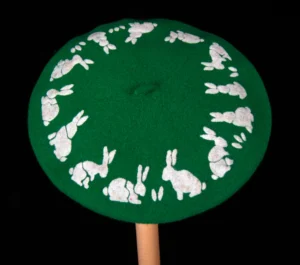
Green wool beret with white rabbist by Viking, 1950s, cst.2.136,
Blog by: Leo Rotaru, Marketing Assistant


